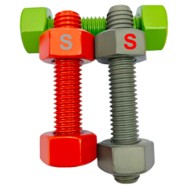
Interpreting fashion scales sometimes resembles solving a hidden riddle
- Observing your bodily proportions begins correct selection
- Capture accurate bust, waist and hip numbers to avoid errors
- Use the vendor's sizing reference to compare figures
Don't depend solely on label sizes since they can deceive Compare your own stats to the provided chart before deciding. Uncovering your look takes iterative personal trials.
Deciphering the puzzle of measurement charts
Sizing chaos in garments troubles customers internationally. Navigating fit tables often feels like working through a challenge, as manufacturers use distinct scaling schemes. Nevertheless, learning a few rules will let you master size charts.
- To start, recognise that US, UK, EU and Asian scales differ. Generally makers provide US, UK, European and regional Asian metrics.
- Afterwards, align your chest, waist, hip and overall length numbers. Crosscheck the chart numbers with your personal figures.
- Lastly, review the company's fit guidance for special advice. Seller guides may include pointers, exceptions and sizing hints.
Pinpointing perfect sizing during purchase
The domain of garment numbers often causes bewilderment. Sized markers vary so a medium can match a different small. Discrepancies result from brand-specific scaling systems. Thus make a careful start by recording accurate personal measurements. Use a fabric tape to record bust, waist and hip measurements. Abstain from assuming the same label across items will fit. A single brand's styles often affect how true a size runs. Determining the best fit is a process of trial and adjustment.

Opting for generic dimensions or custom tailoring
Choosing dimensions for fixtures often requires standard or custom picks. Each route comes with advantages and trade-offs. Regular sizes deliver convenience and frequently lower cost. When uniqueness or precise needs exist bespoke is likely preferable
- Balance intended use and budget when making your pick
- Record exact dimensions of the area or yourself
- Survey suppliers and their specs to choose wisely
Ultimately the best size depends on your own situation.
Navigating cross-border sizing differences
Moving between global size conventions can present tangled routes. Thankfully, standardized conversion aids ease the comparison process. Begin the process by understanding common apparel and shoe metrics. Use conversion charts to relate numbers across systems. Remember that figure and proportions affect how garments sit. Also check user feedback and fit comments for real-world clues.
Decoding fit: sizing made simple
Facing garment charts sometimes causes head-scratching. Labels usually rely on individualized sizing methods, nevertheless these guidelines provide practical help for shoppers.
- First, use a tailor's tape to record your body dimensions
- Following that, juxtapose your measurements with the size guide
- Consider your silhouette because form affects fit perception
At last, physical fitting is the best means to secure correct sizing.
A full-scale handbook to men’s and women’s size charts
Size confusion intensifies for online shoppers without fitting rooms. Consequently, consult this resource for men's and women's standard measures. From pants to shirts and dresses these steps ease size selection.
- Initially recognise variation across brands and countries
- Next, obtain waist, hip, bust and torso measurements accurately
- Finally, err on the side of the bigger size when uncertain
By following these tips you can approach size charts with confidence. Happy hunting for the perfect size!

Helping parents understand children's size charts
Picking the right size for children sometimes seems daunting. Children grow rapidly so sizes change quickly. Rely on the label's measurements instead of suggested ages. Measure child's chest, waist and height to pick correct sizeHow to measure bust, waist and hips like a pro
Correct body stats underpin successful clothing choices. Grab a flexible measuring band and an assistant for precise measurement. Stand straight with feet shoulder-width apart and relax shoulders
A clear look at size ranges including XS to XXL
Fashion sizing now presents a complicated landscape. Wide inter-brand variation erodes uniformity in sizing. Taking a thorough look at size ranges clarifies the situation. Now we reveal how letters and numbers correspond to measurements!
Championing size acceptance

Promoting body diversity helps everyone feel welcome. This involves rejecting narratives that demand one ideal shape. We can strive to form cultures that empower people of every size.
- Commit daily to encouraging body acceptance and love Select habits that promote acceptance and healthy self-view Adopt routines that Standard Size strengthen body confidence and care Adopt routines that strengthen body confidence and care
- Hold in mind that appeal manifests across varied sizes
- Critique visuals and stories that push a single beauty model
- Opt for daily practices that reinforce body love
